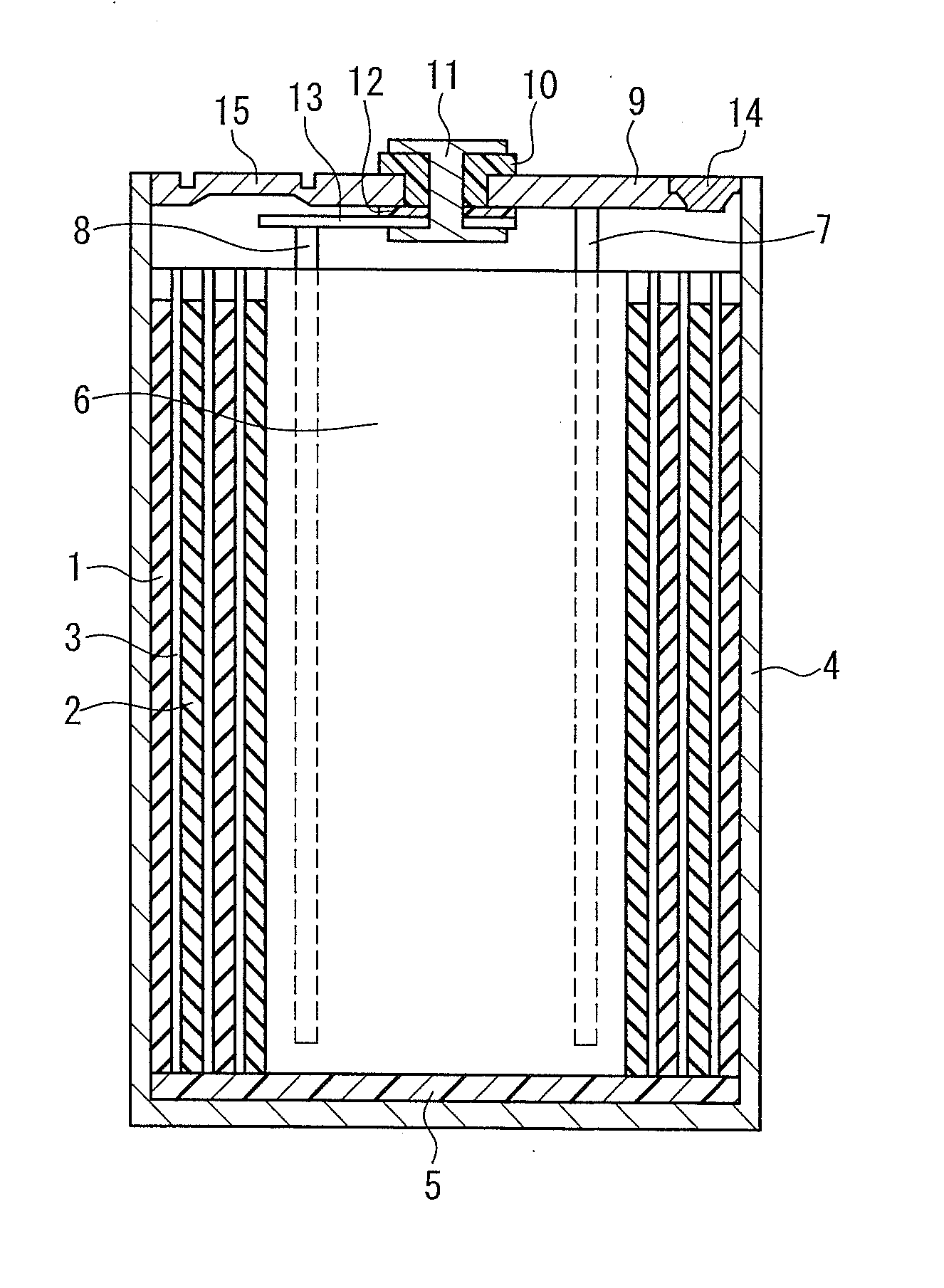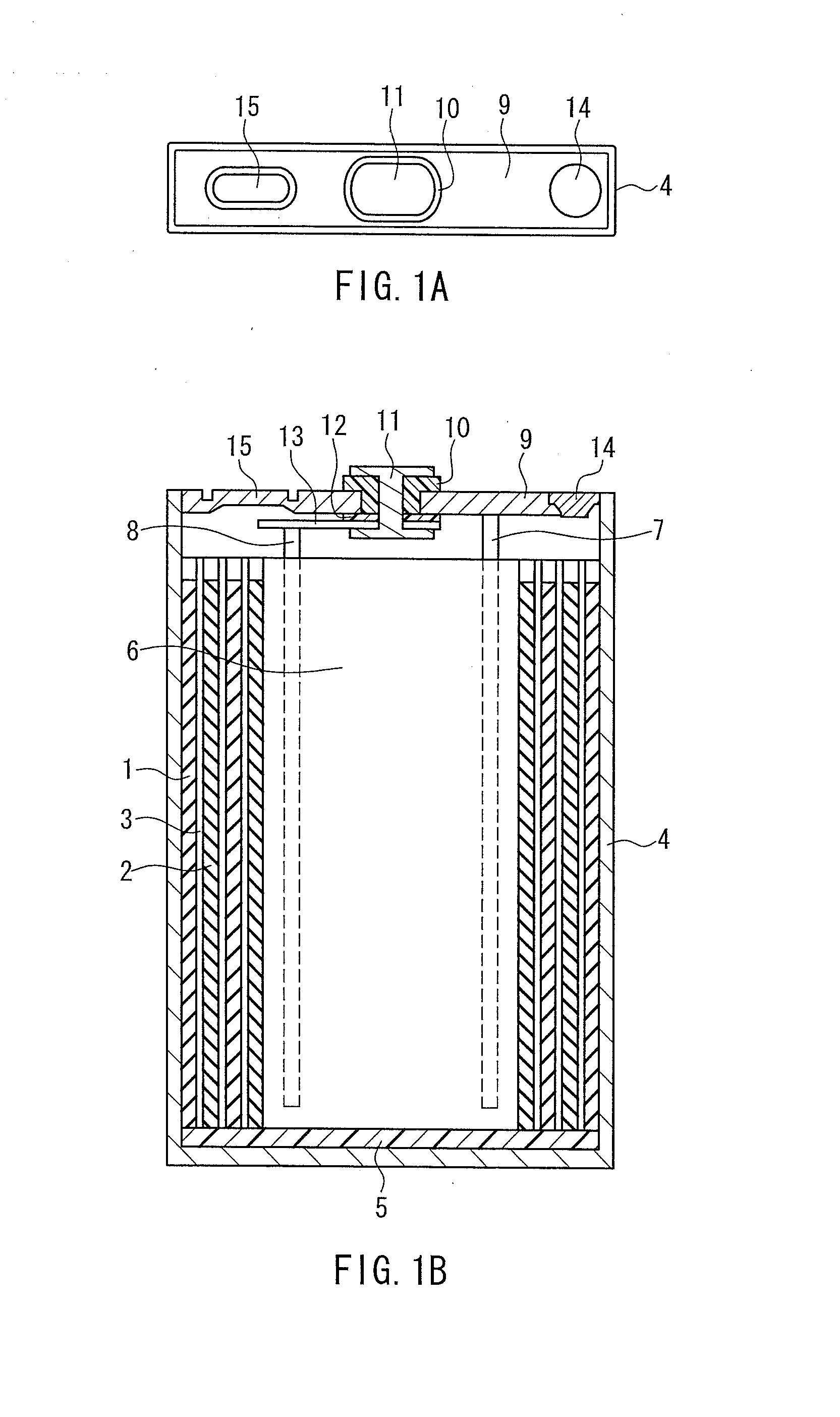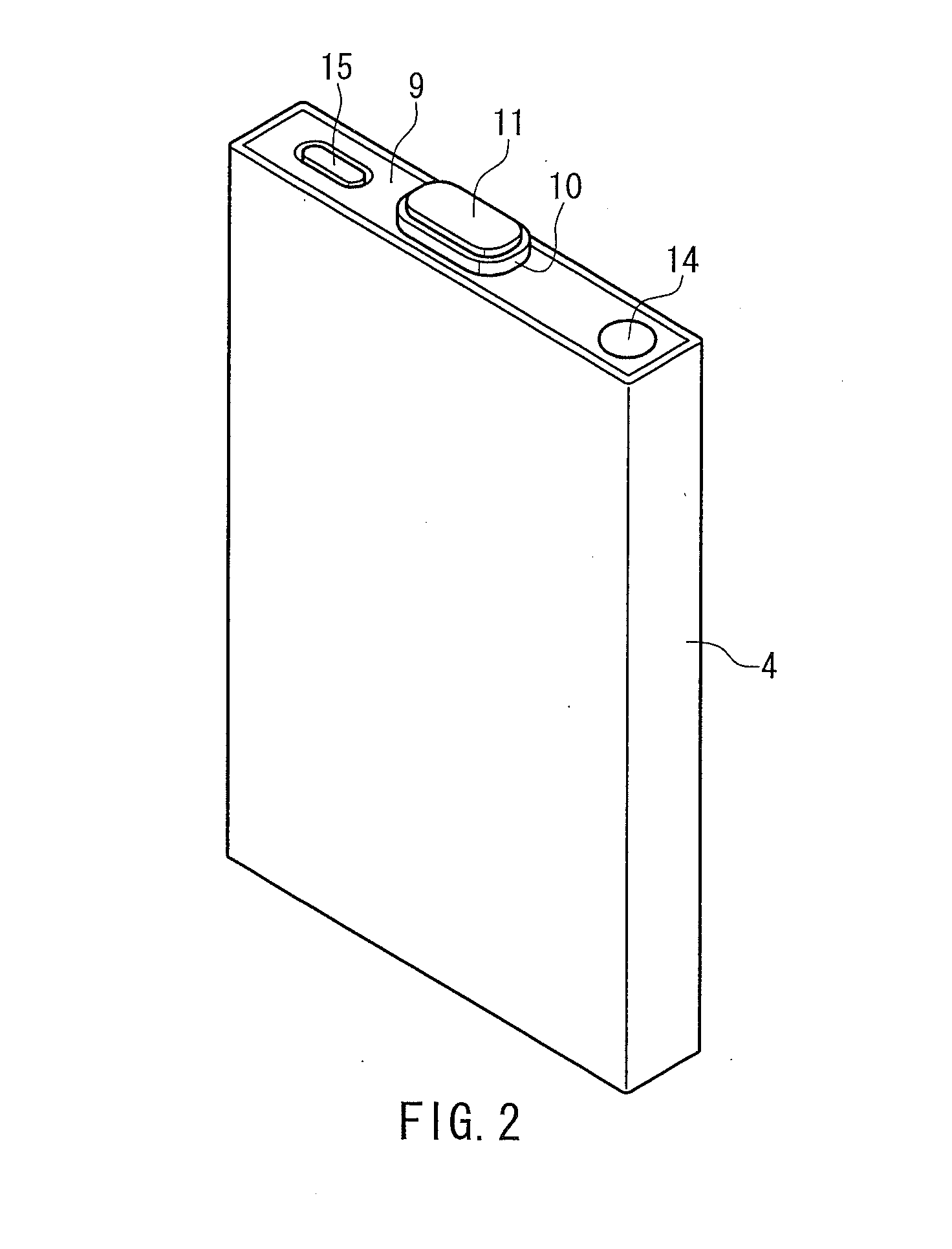Lithium secondary battery
- Summary
- Abstract
- Description
- Claims
- Application Information
AI Technical Summary
Benefits of technology
Problems solved by technology
Method used
Image
Examples
examples
[0196]Hereinafter, the present invention is described in detail by way of examples. However, it should be noted that the examples given below are not intended to limit the scope of the present invention.
[0197]
[0198]A coprecipitated compound (spherical coprecipitated compound) containing Ni, Co and Mn was synthesized by placing, in a reaction vessel, ammonia water having a pH adjusted to approximately 12 by addition of sodium hydroxide, and then, while strongly stirring, adding dropwise a mixed aqueous solution containing nickel sulfate, cobalt sulfate and manganese sulfate at a concentration of 2.4 mol / dm3, 0.8 mol / dm3 and 0.8 mol / dm3 respectively, and ammonia water having a concentration of 25 mass % at a rate of 23 cm3 / min and 6.6 cm3 / min respectively, using a metering pump. At this time, the temperature of the reaction solution was held at 50° C., an aqueous solution of sodium hydroxide having a concentration of 6.4 mol / dm3 was also added dropwise such that the pH of the reaction...
examples 1 to 5
Production of Positive Electrode
[0208]The above-mentioned synthesized lithium-containing composite oxide A containing nickel and LiCoO2 that was another lithium-containing composite oxide were weighed in a mass ratio shown in Table 1 and mixed for 30 minutes through use of a Henschel mixer to obtain a mixture. Then, 100 parts by mass of the obtained mixture serving as a positive active material, 20 parts by mass of a solution in which PVDF and P(TFE-VDF) serving as binders were dissolved in N-methyl-2-pirorridone (NMP), 1.04 parts by mass of carbon fibers serving as a conductive agent, having an average fiber length of 100 nm and an average fiber diameter of 10 nm, and 1.04 parts by mass of graphite were kneaded through use of a biaxial kneader. Further, NMP was added to the resultant mixture to regulate the viscosity thereof to prepare a paste containing a positive electrode material mixture. The use amount of the NMP solution of the PVDF and the P (TFE-VDF) was set so that the amo...
example 6
[0225]A wound electrode body was produced in the same way as in Example 1, except that the above-mentioned synthesized lithium-containing composite oxide B containing nickel and LiCoO2 that was another lithium-containing composite oxide were weighed and mixed in a mass ratio of 0.5:0.5, and the mixture was used as a positive active material. Further, the density of a positive electrode material mixture layer measured by the above-mentioned method was 3.80 g / cm3. Next, a nonaqueous electrolytic solution similar to that used in Example 1 was injected into the outer can, and a lithium secondary battery was produced in the same way as in Example 1, except for setting the concentration of triethyl phosphonoacetate to 5.0 mass %.
PUM
 Login to View More
Login to View More Abstract
Description
Claims
Application Information
 Login to View More
Login to View More - R&D
- Intellectual Property
- Life Sciences
- Materials
- Tech Scout
- Unparalleled Data Quality
- Higher Quality Content
- 60% Fewer Hallucinations
Browse by: Latest US Patents, China's latest patents, Technical Efficacy Thesaurus, Application Domain, Technology Topic, Popular Technical Reports.
© 2025 PatSnap. All rights reserved.Legal|Privacy policy|Modern Slavery Act Transparency Statement|Sitemap|About US| Contact US: help@patsnap.com



